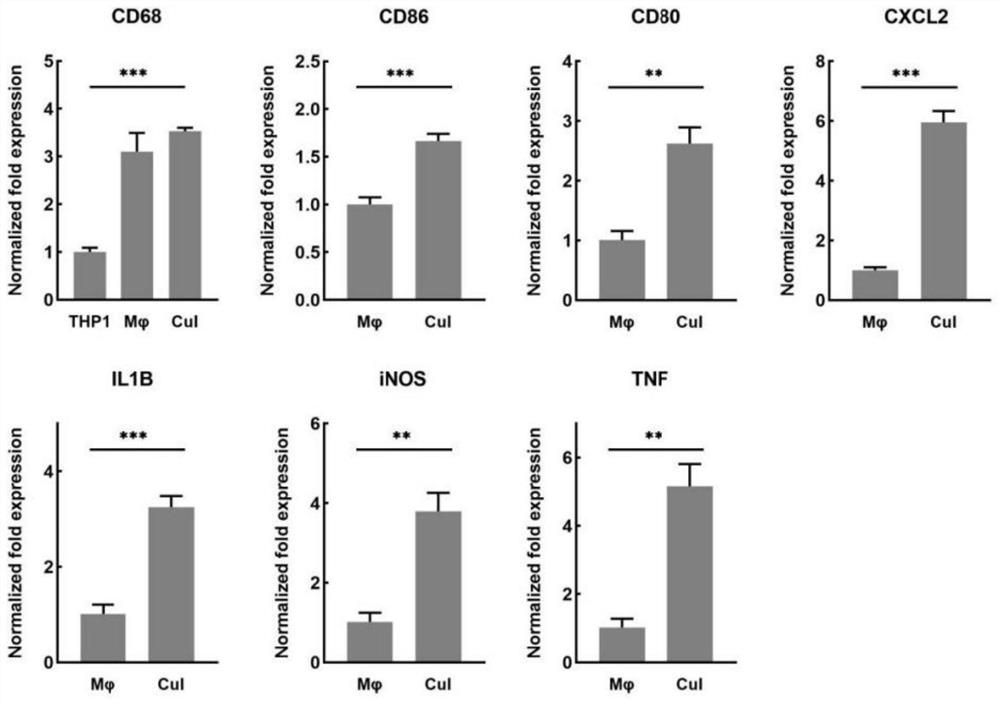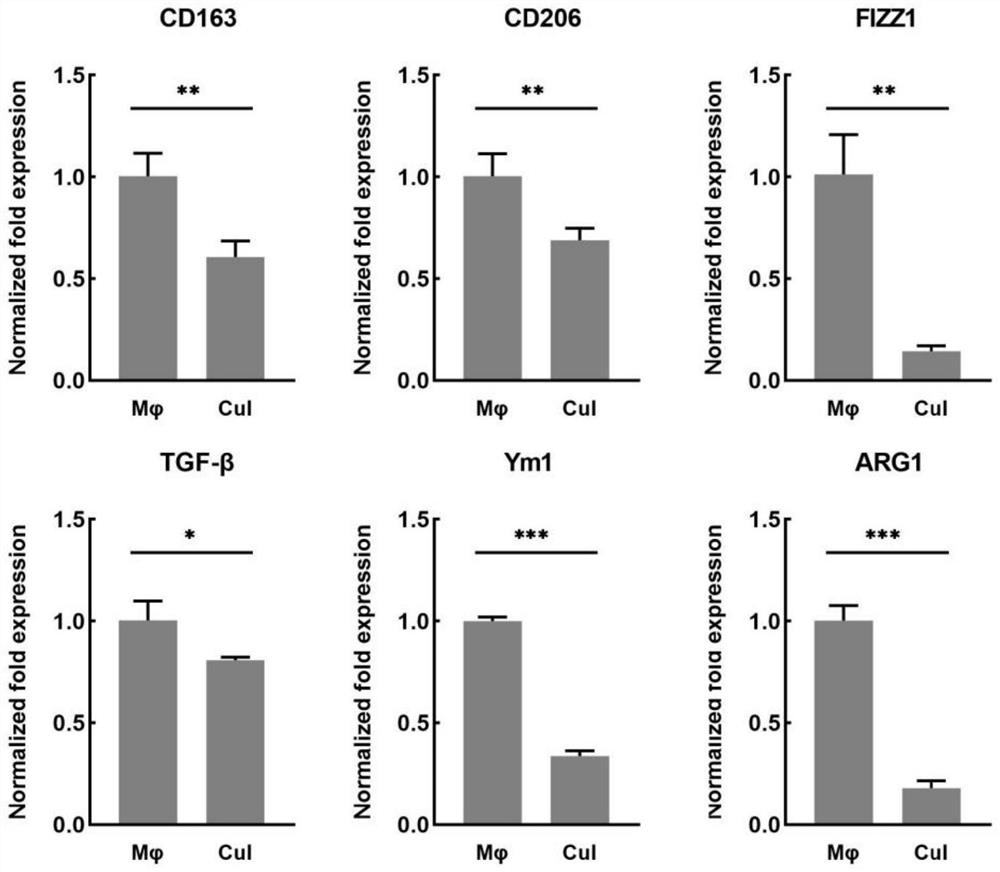Application of cucurbitacine I
A technology of cucurbitacin and macrophages, applied in the field of biomedicine, can solve problems such as adverse events and enhance the prognosis of patients, and achieve the effects of inhibiting immunosuppression, tumor killing and immune activation expansion
- Summary
- Abstract
- Description
- Claims
- Application Information
AI Technical Summary
Problems solved by technology
Method used
Image
Examples
Embodiment 1
[0044] Example 1 Cucurbitacin I promotes the increase of M1-related factors and the decrease of M2-related factors in tumor-induced macrophages
[0045] 1. PMA (phorbol ester-12-myristate-13-acetate) treatment successfully differentiated THP-1 cells: the content of CD68 in differentiated macrophages was known to increase, and RNA samples were collected for QCPR to detect whether they were differentiated success. Will 1*10 6 THP-1 mononuclear cells were inoculated in six-well plates, treated with 100ng / mL PMA for 48 hours to stimulate differentiation, continued to culture for 24-48 hours to remove the influence of PMA, and observed the state of the cells, see figure 1 and collect RNA samples from untreated macrophages and treated macrophages, and perform QPCR detection of differentiation-related factor CD68. The specific steps are as follows:
[0046] The method of RNA extraction is as follows:
[0047] (1) After adding Trizol, place it at room temperature for 5 minutes to f...
Embodiment 2
[0059] Example 2 Cucurbitacin I promotes the M1 polarization of macrophages induced by PMA
[0060] 1. Immunofluorescence experiment: the multi-channel high-resolution detection of fluorescence microscope is used, and the corresponding antigens on the cell surface are checked by using fluorescent antibodies as probes. The location and expression of different antigens in the cells can be determined, thereby determining the polarization of macrophages. Condition. The co-culture system was carried out using cell culture inserts (0.3 μm), and THP-1 monocytes (1×10 6 cells / mL) were inoculated into the upper chamber of the transwell device and treated with 100 ng / mL PMA for 72 hours to stimulate differentiation. The cells were washed 3 times with phosphate-buffered saline (PBS) and incubated for 24 h to exclude the interference of PMA. At the same time, the co-culture system was divided into two groups, one group was differentiated macrophages without any treatment, and the other ...
Embodiment 3
[0062] Example 3 The killing effect of cucurbitacin I on clear cell renal cell carcinoma 786-O has significant time and dose dependence
[0063] 1. Renal clear cell carcinoma cell line 786-O was inoculated into a 96-well plate at a density of 8000 cells per well for overnight culture, and each group included three parallels. The cells were treated with different concentrations (0, 0.25, 0.5, 1, 2, 4, 8, 16, 32, 64 μM) of the drug (cucurbitacin I), and then incubated at 37°C for 24-48 hours under the cultured cells. Drug-free dimethyl sulfoxide (DMSO) treatment was used as a control, and a blank group was set at the same time. One hour before the end of incubation, 10 μL of CCK-8 reagent was added to each well, and the absorbance was measured at 450 nm after incubation for one hour.
[0064] 2. The test results showed that cucurbitacin I significantly inhibited the viability of the 786-O cell line in a dose- and time-dependent manner ( Figure 5 ). The anti-proliferative eff...
PUM
 Login to View More
Login to View More Abstract
Description
Claims
Application Information
 Login to View More
Login to View More - R&D
- Intellectual Property
- Life Sciences
- Materials
- Tech Scout
- Unparalleled Data Quality
- Higher Quality Content
- 60% Fewer Hallucinations
Browse by: Latest US Patents, China's latest patents, Technical Efficacy Thesaurus, Application Domain, Technology Topic, Popular Technical Reports.
© 2025 PatSnap. All rights reserved.Legal|Privacy policy|Modern Slavery Act Transparency Statement|Sitemap|About US| Contact US: help@patsnap.com



